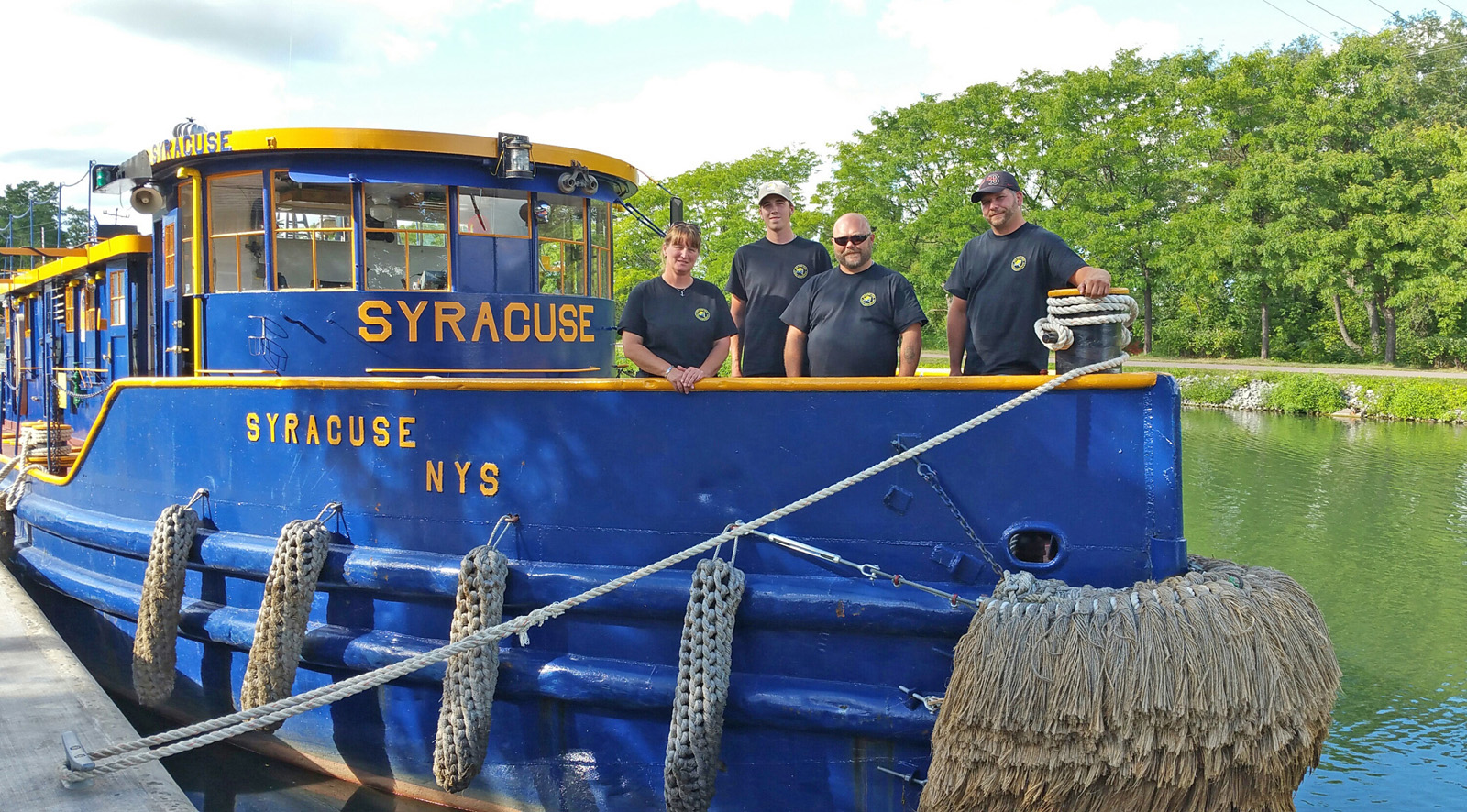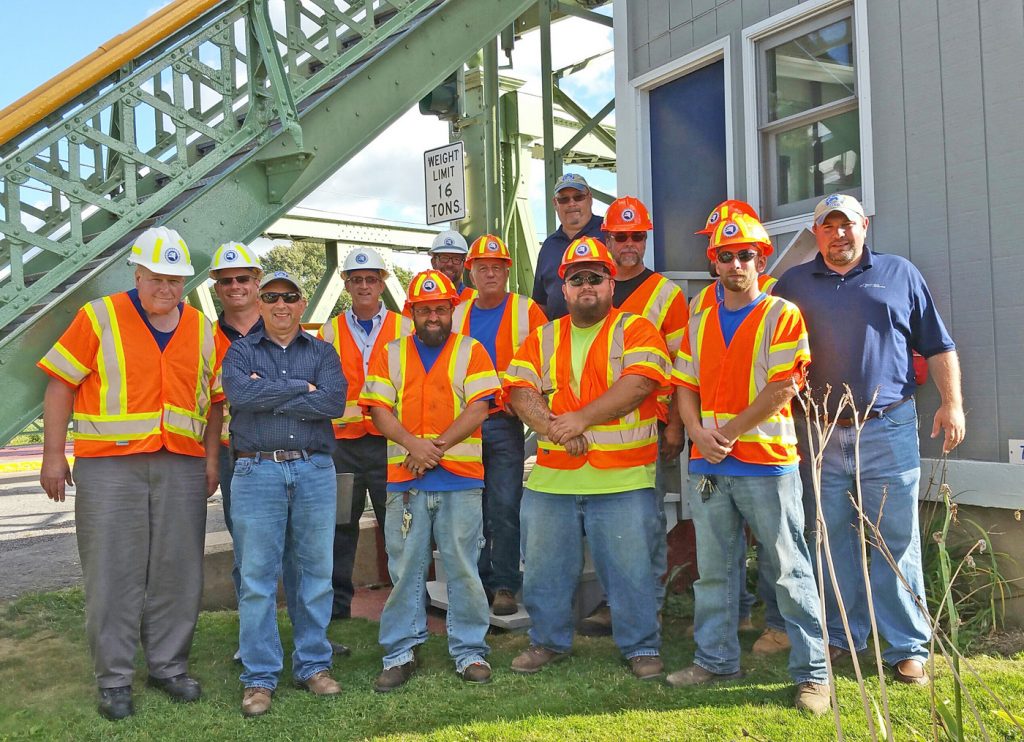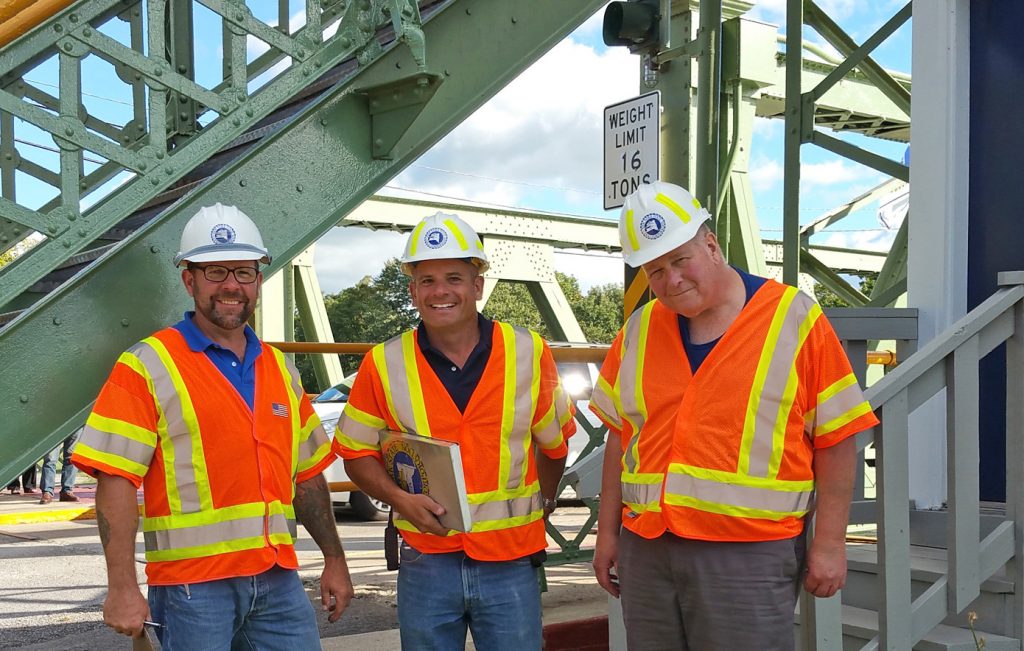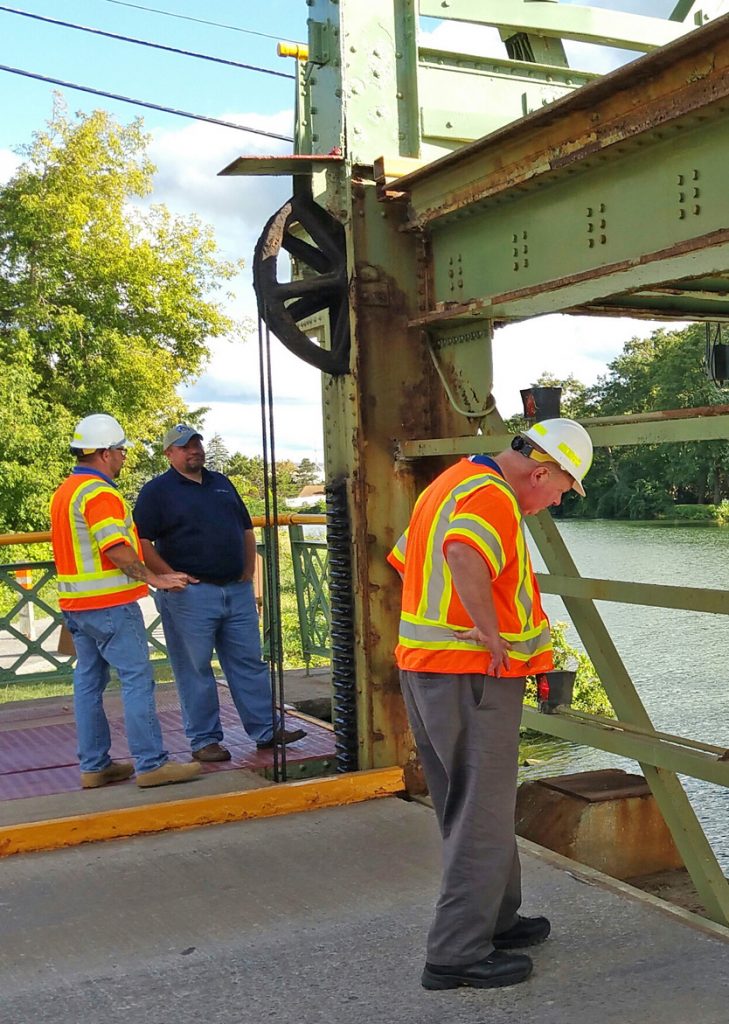Inspecting Brockport’s Erie Canal lift bridges

A top official honors his career roots and the canal’s historical significance
On a sunny September 14, about a dozen Erie Canal staff, most in hard hats and safety vests, clustered around Brockport’s Main Street and Park Avenue bridges. They were performing the annual operations inspection required for the canal’s manned structures: 16 moveable bridges and 57 locks on the 500 miles of the canal. Beginning September 13, the project will continue to be done in sections and has the inspectors traveling by tug boat for two or three days at a time until the last inspections on October 19.
On this late afternoon, the team of inspectors had covered canal towns from Medina to Brockport. Three inspectors based in Albany traveled by Tug Syracuse, docking at the Welcome Center with its crew of four. Local personnel assisting and observing at the Brockport inspection included electricians, the operational staff of the bridge, and a roving bridge maintenance crew. John Callaghan, Deputy Director of the New York State Canal Corporation, stationed in Albany, supervises the canal inspection project, traveling on the tug also.
Three main areas of inspection by the Albany staff are: Safety for employees and the public, electrical and mechanical aspects of the bridge’s operation, and overall appearance including landscape, paint, cleanliness, flags and signage. Score charts are completed for each item and are factored into the maintenance and operations plan.
In a friendly competition, the canal town that receives the highest scores for its lift bridge receives an award flag the following year. This year Holley received the “Best Lift Bridge” banner. “The contest brings out the sense of ownership and personal investment these men and women have in their work to maintain a living part of history, a 100-year-old operating museum, really,” Callaghan said.
Riding the tug from Holley to Brockport was Beau Willis, vice president for administration and finance at the College at Brockport. Callaghan said that they invite local officials and other stake holders along to “discuss canal issues in a contextual environment.” Referring to The College’s 1,000 feet of canal frontage, Willis said, “We want to think about how we can better bring The College and the canal together.”
Asked about his background on the canal, Deputy Director Callaghan said he started as a seasonal tender captain when he left the Coast Guard in 1997. In 1998 he received a permanent appointment as a tug boat captain, “working in maintenance with colleagues on the boats, like Wendy Marble, captain of the Tug Syracuse,” Callaghan said. In 2001 he became a canal traffic agent working in the Albany offices, then moved to his present second-in-command position. “I took what I learned in the early years and applied it in the administrative setting I work in now,” he said. “It is really gratifying. I feel like I have a lot to offer.”

Callaghan’s love of his work is grounded in a rich appreciation for his place in the Erie Canal’s history. Sitting at a picnic table near the Welcome Center, he was asked what reward he feels from his work. His impromptu eloquent statement is quoted in full here.
“It’s incredible and enormously satisfying. When you see a boat leave lock 34-35, you realize that, in a 100-year-old operating canal, we just lifted that boat 570 feet above sea level. We have been doing that for one hundred years, two hundred years, if you go back to the Clinton’s Ditch original canal.
Embarking on our third century of operation, we are still doing what we’ve done all those years. It’s what made New York State the Empire State, opening up the West to expansion and economic development, which basically drew the modern map of America.
It’s amazing to be still doing things largely the same way with the tradition we have in serving so many different interest areas: Recreation boaters, commercial boaters, tourists, farmers who irrigate from the canal, hydroelectric generators providing clean green renewable energy from the canal, industrial research facilities that use the canal for cleaning water, industrial water, and cooling water.
You have all these different people that are using the canal today. When they flip the light switch in a house they may be using the canal. When they turn on the tap they may be using the canal, (and the same) when they eat an ear of corn. And they don’t really think about it.
We have become such an ingrained part of upstate New York State life; I don’t think people realize how the canal touches them. Even if they haven’t taken a boat ride along the canal or ridden along the canal way trail, this is such an inextricable part of upstate New York life. You could never take it away. Imagine what life would be like if this canal would disappear.”







